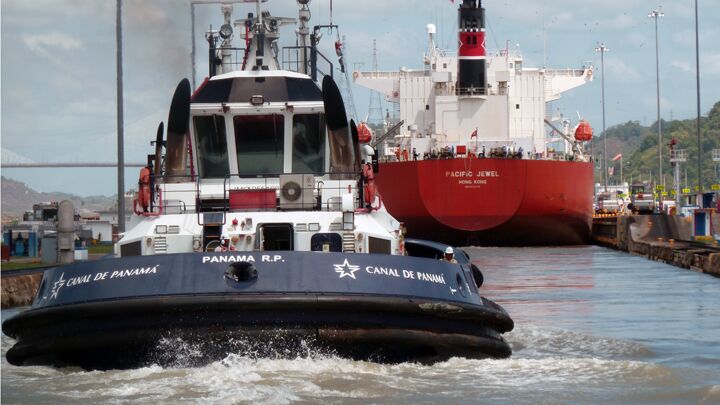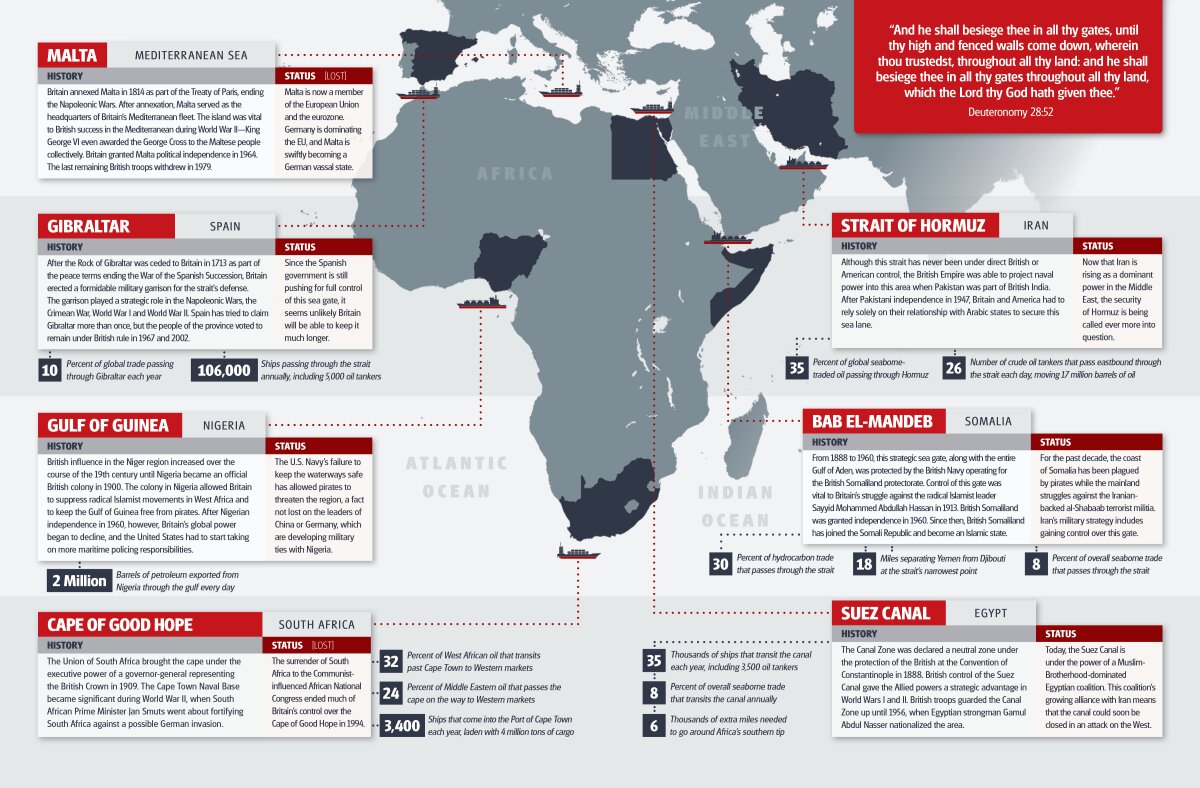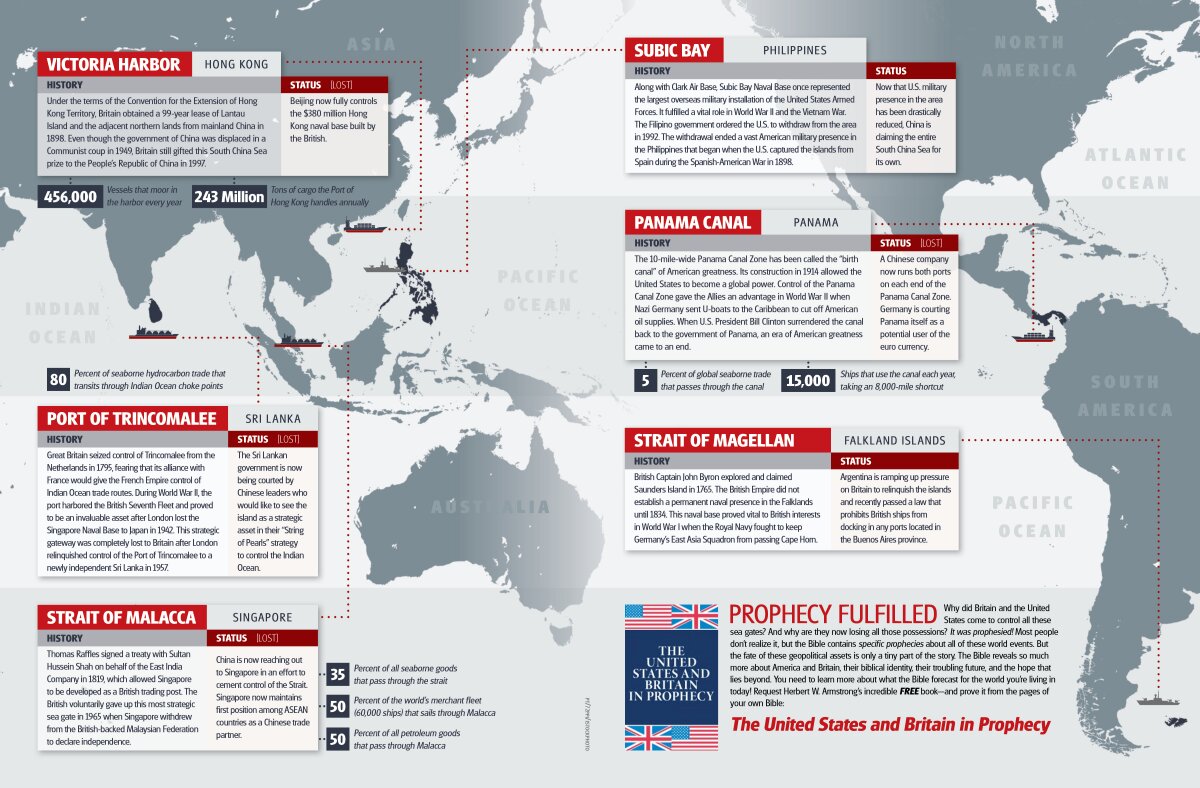Besieged in Thy Gates

Besieged in Thy Gates
It is one of the most astonishing success stories in history. At one time, the English-speaking peoples of Britain and America controlled two thirds of the world’s agriculturally productive land. And, impressive as their landholdings were, their maritime reach was even more astounding.
These two powers controlled virtually every important oceanic choke point and sea gate on the planet. Oceanic trade and sea communication only existed to the extent that Britain and America allowed it. This domination of global trade turned these two peoples into economic superpowers.
Massive port cities like Hong Kong, Port Said, Quebec City and Calcutta—river gateways to entire countries and continents—all flew the Union Jack. New Orleans flew the other red, white and blue. From these cities and many others, goods from almost a quarter of the world’s population traveled to markets around the world. It was British and American ships carrying those goods too.
Control of these ports meant mastery of the world’s shipping lanes. British and American guns commanded both ends of the Mediterranean Sea, as well as the Panama Canal, the Strait of Malacca, Cape Horn and the Cape of Good Hope, in addition to the best natural and strategically placed naval harbors in the world.
Never have so few people controlled the destiny of so many.
How did these two nations grow to dominate global trade to such an astounding extent? The book The United States and Britain in Prophecy explains why America and Britain rocketed from insignificant nations to global superpowers. As Herbert W. Armstrong explained in his book, it all began with a promise made to the ancient patriarch Abraham in which God promised to give his descendants control of the “gates” of their enemies (Genesis 22:17). God gave Britain and America these commercial gates, virtually ensuring that they would become economic and military superpowers.
But God also warned that if America and Britain did not obey Him, then not only would those sea gates be taken away, but they would be used against these nations (Deuteronomy 28:52).
The maps on the following pages depict the amazing extent of British and American power at one time—and then show how much of it has been lost. The fulfillment of this latter prophecy is a telling indicator of where the U.S. and Britain are heading.


